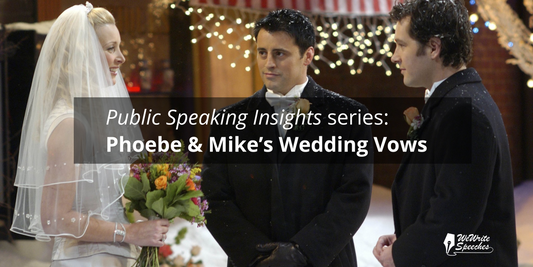Why do the trios of the Three Musketeers, the Three Little Pigs, and Faith, Hope, and Charity strike a chord within us? The answer has to do with structure. These examples use one of the simpler structures, the so-called Rule of Three (sometimes called the Power of Three). There are many more frameworks that are useful because they help us naturally grasp and effortlessly retain information.
Here is a useful tip: You can deliberately structure your speech using a framework to make it easier to remember. By grouping your ideas within familiar and purposeful frameworks, you tap into the innate tendency of our minds to remember information in patterns. Whether you find yourself delivering a keynote address or presenting a compelling sales pitch, incorporating a strategic structure not only using a strategic structure can not only make your content more compelling but also easier to remember.
There are various widely used frameworks in public speaking, copywriting, and other forms of communication. Here are a few notable examples:
- AIDA (Attention, Interest, Desire, Action): Originally used in marketing and advertising, this structure is equally effective in speechwriting. It's a persuasive sequence designed to grab the audience's attention, generate interest, create desire, and encourage action.
- PPPP (Picture, Promise, Proof, Push): This structure helps to paint a vivid picture for your audience, promise them a solution, provide proof with data or testimonials, and then push them towards a call to action.
- The Rule of Three: This principle suggests that things grouped in threes are inherently more memorable. From jokes to storytelling to making key points, the Rule of Three is a versatile and highly impactful technique.
- Minto Pyramid Principle: Developed by Barbara Minto, this method emphasizes starting with the answer or conclusion, providing supporting ideas, and finally offering detailed evidence. It's a top-down approach that ensures the audience quickly understands the main point and how the supporting elements connect.
- PREP (Point, Reason, Example, Point): This simple and versatile structure allows speakers to make a point, explain the reason behind it, provide an example, and then reiterate the point. It's a clear and concise way to communicate ideas in a logical and compelling way.
- What? So What? Now What?: This reflective model is perfect for encouraging thought and action. First, present the 'What?' or the facts, then explain the 'So What?' or why it matters, and finally, offer the 'Now What?' or the call to action.
- Problem-Solution-Benefit: Begin by outlining a problem that resonates with the audience, then propose a solution, and conclude by emphasizing the benefits of implementing that solution. This structure is highly effective for persuasive speeches.
- Monroe's Motivated Sequence: This five-step structure developed by Alan H. Monroe is designed to motivate action. It includes Attention (grabbing interest), Need (establishing a problem), Satisfaction (providing a solution), Visualization (helping the audience see the benefits), and Action (calling for a specific response).
Most of these frameworks can serve as blueprints to construct entire speeches, and a subset of them could also be used to structure just a discrete section of a speech.
When you start work on a new speech, your decision about how to structure it will be primarily driven by what you are aiming to achieve with the speech. This is as it should be, and if you choose an appropriate framework, you are likely to achieve your objectives. But by using such a framework, you also gain a very important secondary benefit – that it will be easier for you to remember your speech.
When we structure our speech in a recognizable pattern, we create 'memory hooks' that help us and our audience to recall the information. For example, if you're using the Minto Pyramid Principle, you won’t have to remember the structure – that will be automatic. You need to remember how to slot your information into it.
These structures also provide a logical flow, which further aids in memory recall. For example, most of us will instinctively feel that a Call to Action should come at the end of a speech (and several well-known frameworks are built like this). Frameworks offer a sense of predictability, which can reduce cognitive load and make the information more digestible and easier to remember.
In conclusion, when feasible, it is a good idea to deliberately structure your speech according to a familiar framework. It simplifies your content, enhances its impact, and makes it more memorable. So, next time you're preparing a speech, consider incorporating one of these frameworks, assuming you find an appropriate one. Not only will it help you remember your content better, but it will also help your audience remember your message long after you've left the stage. And that's a success by any standard.
This blog is part of a series on speech memorization techniques. To see the other blogs in the series (and a lot of cute foxes) click here.




